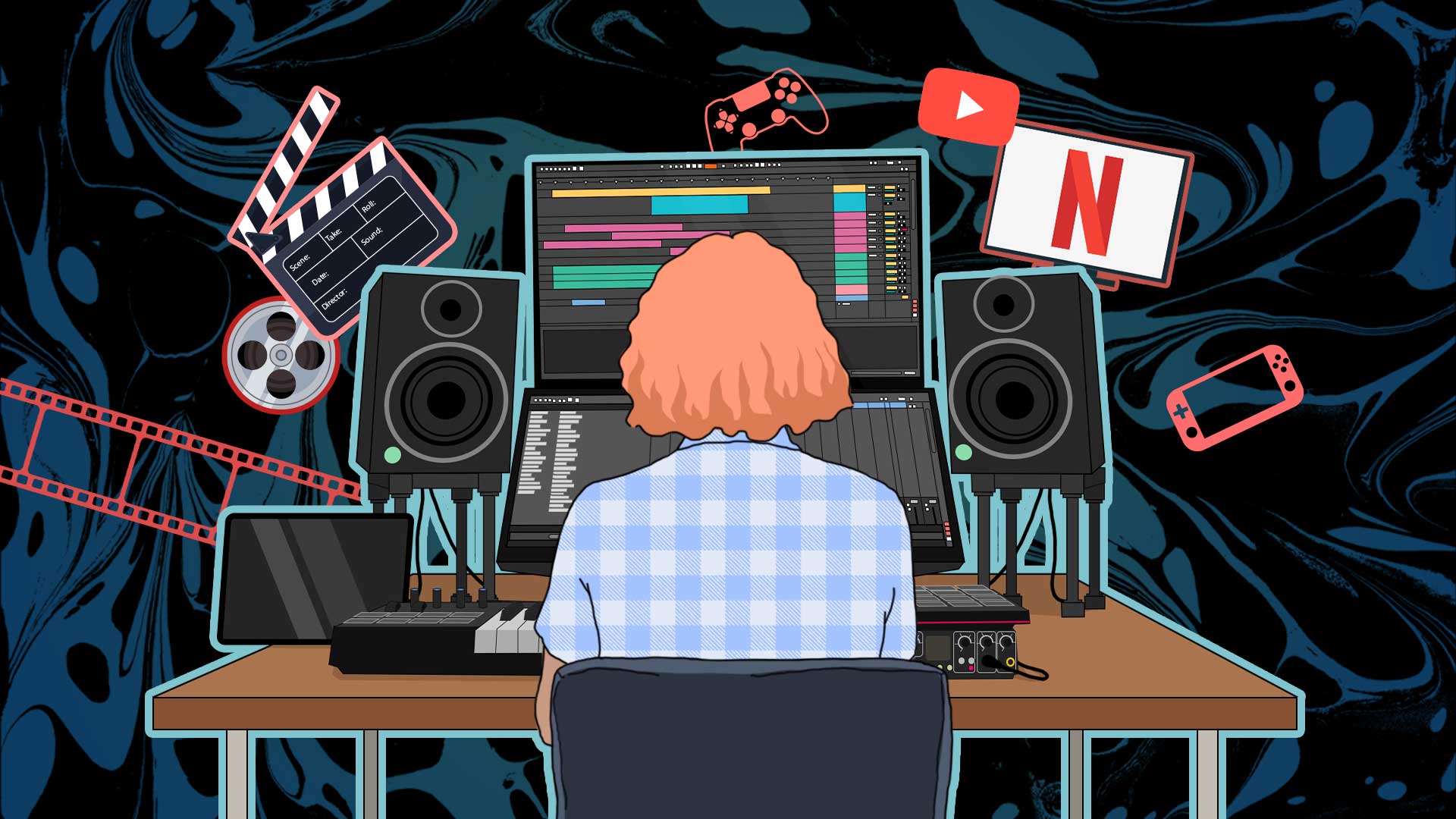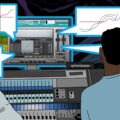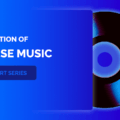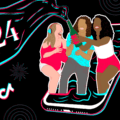In part one of this series, Sync Licensing: What It Is and How It Works, we gave you an overview of this area of the music industry, from rights and royalties to key players. If you haven’t read it yet, be sure to check it out to cover the fundamentals.
In today’s follow-up, we are diving a little deeper into how to get your music sync-ready. Whether you’re writing music specifically for licensing opportunities or as part of an artist project, there are a few steps you can take to better your chances of getting your music licensed.
Writing for Sync
To preface, it’s important to understand that sync licensing opportunities are virtually endless, meaning that even the most niche genres of music can find their way into a sync placement if the fit is right. That being said, there are some things you can keep in mind when writing music that may open a few more doors.
Before you begin writing, hone in on a theme that is strong but universal – something that most people can relate to in one way or another, be it heartbreak, friendship, or otherwise. For a song to be “syncable”, it needs to resonate with a large audience. For example, a song about female empowerment can be used for a teen drama series, a commercial geared toward working moms, or a reality show about high-powered executives.
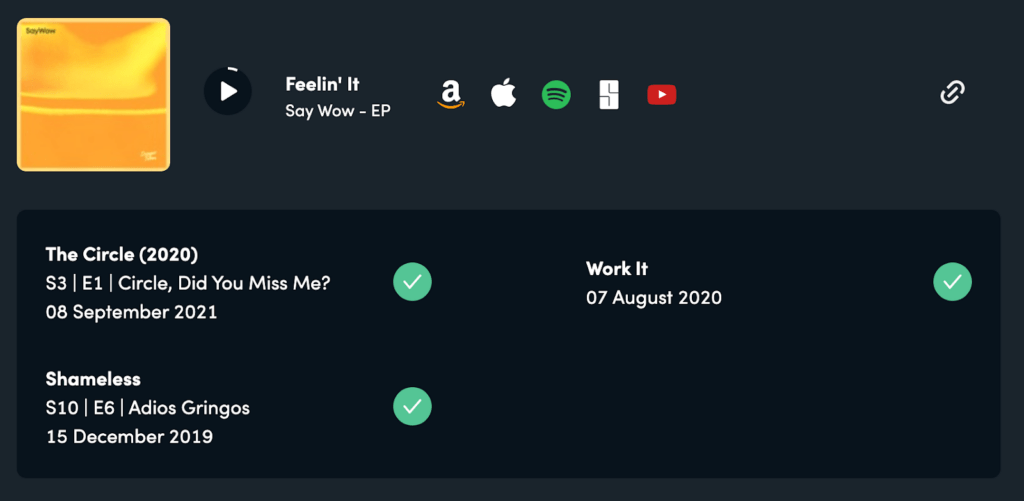
Remember that the music needs to support the story that is being portrayed in the visual medium, which is why it’s also important to keep the lyrics simple – your storytelling can’t conflict with the one on screen. Simple, however, does not mean generic or boring. Your challenge is to find a unique way of expressing a universal subject and evoking emotion without too many specifics or complexities.
You might be wondering whether lyrics/vocals are even necessary. Oftentimes you’ll hear instrumental tracks in sync, but these are typically either songs that had a vocal removed for the sake of the sync or they are compositions created by the production’s in-house composer. Music supervisors and licensing agents generally look for tracks with both a strong vocal and instrumental version.
In some cases, you can get access to briefs, which provide a breakdown of the requirements for a particular sync placement. Briefs can include information such as the project type (i.e. commercial, TV show, video game), desired genre, subject matter, tempo, and often offer other song references as guidance. This helps guide you when songwriting for specific projects, but briefs can be hard to come by. They are typically either obtained through an industry relationship, or licensing websites like TAXI, where you can expect a great number of people to be competing for the same spot.
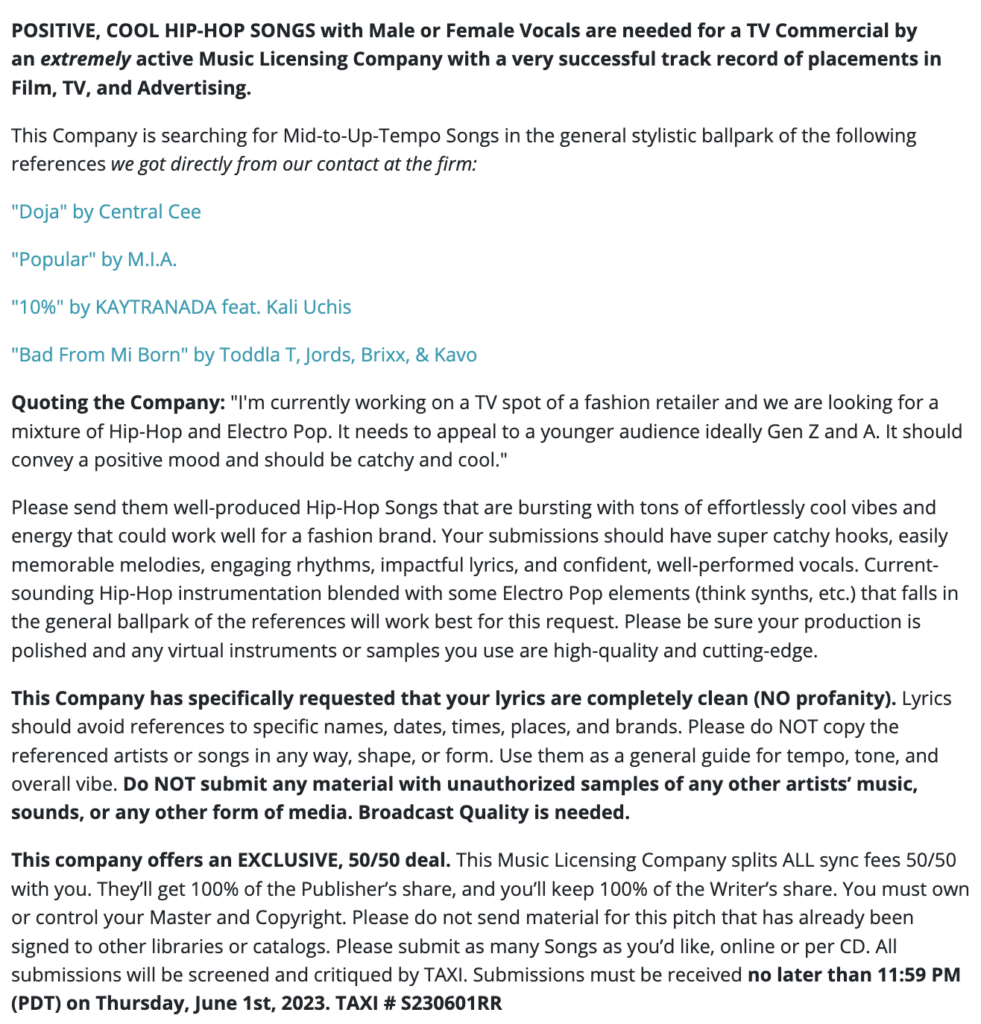
Producing for Sync
Once you’ve written your relatable-yet-evocative song, it’s time to produce it. The production should match the emotion and theme of the song closely, so that it can stand on its own as an instrumental or a short 15-second edit, which is not uncommon for sync placements. Every element should be carefully thought out and purposefully support the story you are trying to tell.
Dynamics are also crucial in sync licensing – your song should be evolving throughout, with new details introduced as you build tension and release. Not only does this help maintain interest in your song, but it also supports on-screen moments like scene changes or other transitions.
When it comes time to mix and master the track, there is one thing all key sync decision makers agree on: the final master needs to be of broadcast quality. Even if you have the catchiest, most “syncable” song ever written, it will not be licensed if it does not hold up to industry standards. The best way to achieve this is A) hire professional mixing and mastering engineers (unless of course you are an experienced expert yourself) and B) put your track in a playlist with other songs that have previously been licensed and compare them. Yours should blend in seamlessly with the others, from a quality standpoint.
Hot Tip: a sample rate of 48 kHz and 24-bit resolution should be used for sync. Though not an official rule, it is typically what you will find in broadcast.
Once production is complete, it is highly encouraged to ask your producer to send you all the stems (as .wav files), in addition to a final mix of the instrumental version. Having stems available can be highly valuable to the editor of a sync placement as it provides them with the possibility to play with dynamics of the song or re-arrange it to make it work with the scene. Perhaps they just want to use the vocals or they might want to remove an element from the chorus. It’s also handy to have a clean version if your song uses profanity. These are all simple steps that elevate your chances for success in sync.
Legal Prep for Sync
As we mentioned in Part 1, it’s essential that you register your original songs with your PRO (SOCAN if you’re Canadian). Before doing so, you’ll want to create a split sheet, which is an agreement between co-writers documenting who owns what percentage of the song. It should also include details such as the name of the composition, each writer’s PRO #, publisher info if applicable, and contact info.
Getting this in writing (with signatures) will not only protect you from any legal issues down the road, but it is necessary for the sake of clearing rights when the song is licensed. It is a music supervisor’s worst nightmare to have a songwriter or publisher come out of the woodwork and claim that a song was used without their permission. Trust us, this is one step you do not want to skip!
If you are the only writer and you also own 100% of the master (i.e. you don’t have a label, nor share ownership with anyone else), you can claim to be what is known as “one-stop”. This implies that, should someone want to license the song, they would only have to make one stop to clear the rights – you alone can sign off on both the sync license and the master use license.
If you are not the sole owner of the master, you can still create a one-stop agreement, where all master and publishing owners agree to allow you to represent all rights to the song, so that you can authorize its use without needing them to sign off first.
In any case, the takeaway here is to get your legal ducks in a row with all co-creators and owners as soon as possible, so that when a sync licensing opportunity does present itself, you will be ready.
Metadata for Sync
Last but certainly not least in getting your music sync-ready, is metadata. This is the data embedded in your music files that contains a variety of information, such as publishing info, lyrics, release date, BPM, and more.
Metadata is a vital piece of the sync puzzle for a couple reasons. One, music supervisors and licensing agencies tend to have vast catalogues of music, and so they depend on metadata to provide them with all the information they need when clearing a song. They also need a quick way to comb through their databases when searching for the right song for their project, so by including lyrics, keywords (think theme tags), or tempo, you’re helping them find your music more easily. It’s not uncommon for songs to sit in a catalogue for a while before getting licensed, so metadata serves as a useful informational and research tool that benefits all parties.

Hot Tip: be sure to include your contact info in the metadata – if they love your song but don’t know how to reach you, they will quickly move on to the next!
Note that wav files do NOT carry metadata, so you have to embed it into an mp3 version, which is why it’s important to have both file types for each of your songs. To add metadata to a track, you can use iTunes (now known as Music for Apple users) or services like DISCO. Though DISCO requires a monthly subscription fee, it is widely used among people working in the sync industry.
—Final Notes—
There is no rulebook when it comes to sync licensing. With so much visual content being produced and distributed these days, the demand for music in sync is only growing, and there are infinite ways to get involved in that part of the industry. This article offers a few solid tips to help you prepare your music and get a head start, and in the meantime don’t be afraid to put yourself out there and start building your sync network!
Written by Andria Piperni
Illustration by Yihong Guo
